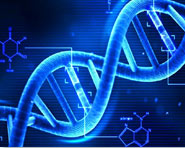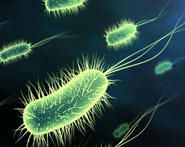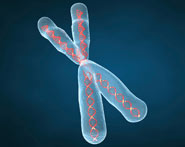


 النبات
النبات
 الحيوان
الحيوان
 الأحياء المجهرية
الأحياء المجهرية
 علم الأمراض
علم الأمراض
 التقانة الإحيائية
التقانة الإحيائية
 التقنية الحيوية المكروبية
التقنية الحيوية المكروبية
 التقنية الحياتية النانوية
التقنية الحياتية النانوية
 علم الأجنة
علم الأجنة
 الأحياء الجزيئي
الأحياء الجزيئي
 علم وظائف الأعضاء
علم وظائف الأعضاء
 الغدد
الغدد
 المضادات الحيوية
المضادات الحيوية|
أقرأ أيضاً
التاريخ: 4-6-2019
التاريخ: 1-1-2018
التاريخ: 11-9-2020
التاريخ: 23-11-2018
|
In early December 2019, a group of health workers in Hubei Province, China, in Wuhan, near the seafood market, reported severe pneumonia-like symptoms of unknown cause (She et al.,2020). Initially, it was called the contagious, 2019 Coronavirus (2019-nCoV), thus the name of the pathogen was later reformulated as SARS-CoV-2 by the Coronavirus Study Group (CSG) of the International Committee on Taxonomy of Viruses (ICTV) (Coronaviridae Study Group of the International Committee on Taxonomy of Viruses,2020), In February 2020, the illness resulting from the SARS-CoV-2 virus has been officially designated as COVID-19. In the beginning of 2020, the World Health Organization (WHO) declared the SARS-CoV 2 outbreak as its most recent global health emergency, following previous emergencies such as H1N1 through the year 2009, polio within 2014, the Ebola virus in West Africa in 2014, which was Zika in 2016, and the Ebola virus in the Congo's Democratic Republic of the Congo in 2019 (Chen et al., 2020). At the time of the 2019-nCoV-pandemic, the pathogenicity of 2019-nCoV-nCoV was not fully known, but it is life-threatening and has caused many deaths through its ability to adapt to the host and cause severe infections, both in humans and other organisms that commonly cause systemic diseases. Digestive or respiratory, because the two systems have nearly the same ACE-2 receptor (Li et al., 2020b)
In addition to the transmission of the Coronavirus from animals to humans, what caused its spread around the world made The declaration of an international crisis by the World Health Organization is in response to the worldwide epidemic of the SARS-CoV-2 virus among people through the possibility of transmission from one person to another, which caused it to spread very widely among Different countries of the world in all continents, Asia, Europe, America, and some Africa, The severity of infection with the virus varies depending on several factors, such as comorbidities, age, Sex, living conditions, and the environment (Khalili et al., 2020 ; Mantovani et al., 2020).
References
-------------
Chen, N., Zhou, M., Dong, X., Qu, J., Gong, F., Han, Y., et al. (2020). Epidemiological and clinical characteristics of 99 cases of 2019 novel coronavirus pneumonia in Wuhan, China: a descriptive study. Lancet (London, England), 395(10223), 507–513. https://doi.org/10.1016/S0140-6736(20)30211- 7
Coronaviridae Study Group of the International Committee on Taxonomy of Viruses (2020). The species severe acute respiratory syndrome-related coronavirus: classifying 2019-nCoV and naming it SARS-CoV-2. Nature microbiology, 5(4), 536–544. https://doi.org/10.1038/s41564-020-0695-z
Khalili, M., Karamouzian, M., Nasiri, N., Javadi, S., Mirzazadeh, A., and Sharifi, H. (2020). Epidemiological characteristics of COVID-19: a systematic review and meta-analysis. Epidemiology and https://doi.org/10.1017/S0950268820001430 infection, 148, e130.
Lib, X., Wang, W., Zhao, X., Zai, J., Zhao, Q., Li, Y., et al. (2020). Transmission dynamics and evolutionary history of 2019-nCoV. Journal of medical virology, 92(5), 501–511. https://doi.org/10.1002/jmv.25701
Mantovani, A., Beatrice, G., and Dalbeni, A. (2020). Coronavirus disease 2019 and prevalence of chronic liver disease: A meta-analysis. Liver international : official journal of the International Association for the Study of the Liver, 40(6), 1316 1320. https://doi.org/10.1111/liv.14465
She, J., Jiang, J., Ye, L., Hu, L., Bai, C., and Song, Y. (2020). 2019 novel coronavirus of pneumonia in Wuhan, China: emerging attack and management strategies. Clinical and translational medicine, https://doi.org/10.1186/s40169-020-00271-z



|
|
|
|
دراسة: حفنة من الجوز يوميا تحميك من سرطان القولون
|
|
|
|
|
|
|
تنشيط أول مفاعل ملح منصهر يستعمل الثوريوم في العالم.. سباق "الأرنب والسلحفاة"
|
|
|
|
|
|
|
لتعزيز التواصل مع الزائرات الأجنبيات : العتبة العلويّة المقدّسة تُطلق دورة لتعليم اللغة الإنجليزية لخادمات القسم النسويّ
|
|
|